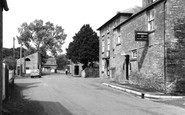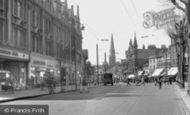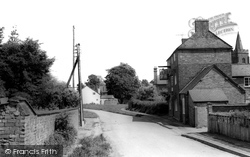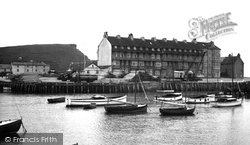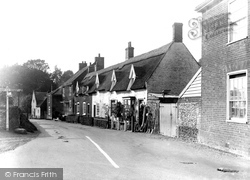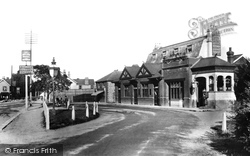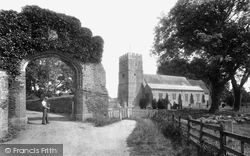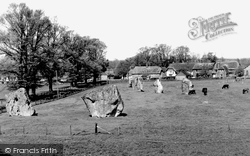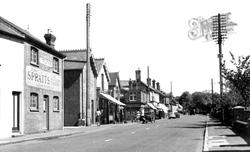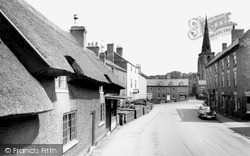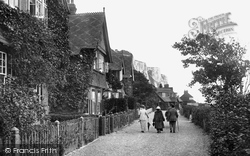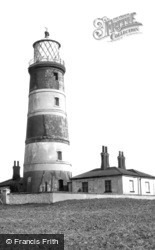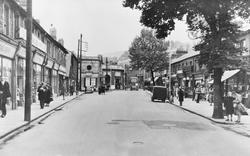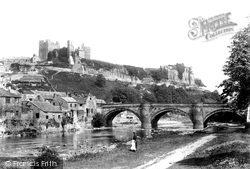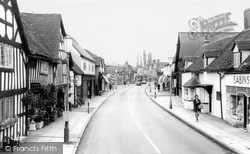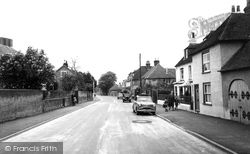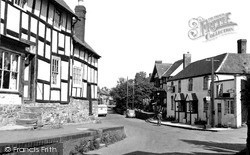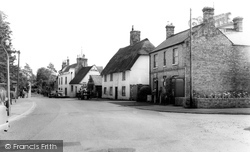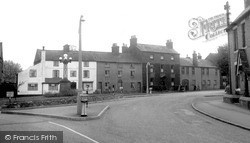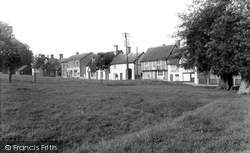Places
3 places found.
Those places high-lighted have photos. All locations may have maps, books and memories.
Photos
40 photos found. Showing results 121 to 40.
Maps
8 maps found.
Books
Sorry, no books were found that related to your search.
Memories
727 memories found. Showing results 61 to 70.
My Childhood
I believe that my maternal grandmother once lived in the pub called The Rising Sun. Her maiden name was Mary Alice Bellis - and my parents, sister and I visited the village during the 1930s. . We stayed with family who lived in the ...Read more
A memory of Rhydymwyn in 1930 by
Boyhood Memories
I was born in 89 Abbot Street, just off Sunderland Road, in 1932, then we moved to the Gateshead end of Redheugh Bridge. When the Second World War started we moved to 20 Brussel Street. The Davidson family lived in the flat above ...Read more
A memory of Gateshead in 1940 by
Old Southall Remembered
I lived in old Southall (Norwood Road - Norwood Green end) during the 1960s to the 1990s and have seen great changes. I went to school at Clifton Road, and the school had a great Headmaster, Mr Hancock, for a while. One ...Read more
A memory of Southall
Walk About
Now living in Australia - Arriving back to visit relatives, a previous life time of my walk about ways seems so dream-like. Living at The Greig Farm above the Wier Farm (The Wier which had been in my family forever) was the best ...Read more
A memory of Ewyas Harold in 1965 by
Collyhurst Flats
I lived at 6 Central Drive from the age of about 3 to the age of 14. I went to The Albert Memorial School on Queens Road and left there in '61 We had moved to Langley, Middleton in 1960. My name then was LINDA WHALEN, I had 3 ...Read more
A memory of Collyhurst in 1957 by
Bramley In The Years 1935 To 1941
Now 80 years of age I used to live with my Mum and Dad and brother Michael in Lincroft Crescent just above the Sandford estate. The houses were new and rather small though we were so happy there ...Read more
A memory of Bramley in 1930 by
A Wartime Child
I was born in 1935 at 25 Cambridge Road, maiden name Lee. There were six of us, parents, 2 older sisters, Beryl and Gwen, and grandmother. I remember many of the shops from the late 30's to the early 50's when we moved to Surrey. ...Read more
A memory of North Harrow in 1930 by
Stubbington 1956 1968
Thank you Lorraine for the many memories you brought back. I lived in Queens Crescent from when I was born in 1956 until I moved to Australia in 1968. I also remember the bakery on the corner of the lane by the school and ...Read more
A memory of Stubbington in 1962 by
The Red Lion Inn Thursley
I lived in The Red Lion Inn, Thursley (Bridle Cottage) from the day I was born for approximately 22 years. I was born in June 1961 and I am the oldest child of four. I lived with my parents and grandparents. My grandfather, ...Read more
A memory of Thursley in 1961 by
Ealing 1962 Onwards
I moved to Windsor Road in Ealing in 1962 when I was 11. I remember the Grove with fond memories. All the shops! The tailor's shop and the barbers. The sweet shop which always had a bowl of water for the dogs outside in the summer, ...Read more
A memory of Ealing in 1962
Captions
241 captions found. Showing results 145 to 168.
The camera looks north towards the large green; on its right is the three- storey early 19th- century red brick Royal Oak pub.
The camera looks north towards the large green; on its right is the three- storey early 19th- century red brick Royal Oak pub.
While the tide of council house building swept ever outwards, mainly to the north and east of the city centre, the 'scarlet fever' of private red-brick detached and semi-detached houses and
The view is south-eastwards to the Bay House Cafe and East Cliff (centre).
This pretty village has a number of attractive houses. This picture shows the varied building materials used in Norfolk: flint, clay-lump and the famous Norfolk Red brick.
The Red Lion can be traced back to 1680 and stood alone until the arrival of the railways and Cane Hill Hospital.
The 15th-century tower of the church stands on Norman foundations, and houses the tomb of the last abbot of St Augustine's abbey at Canterbury who, at the time of the Dissolution, was given the manor
The massive circle of stones virtually encompasses the village; here, we can see the Red Lion pub (the white gabled building), the chapel on the right, and domestic thatched housing all inside a stone
The Red Lion, c1550, is an old coaching inn. Nymans Gardens has an ornate dovecote and is in the care of the National Trust and open to visitors. Handcross Park house is now a school.
The 15th-century tower of the church stands on Norman foundations, and houses the tomb of the last abbot of St Augustine's abbey at Canterbury who, at the time of the Dissolution, was given the manor
The arrival of framework knitters heralded a dour expansion of red brick housing and hosiery factories, but some nice examples of vernacular architecture are to be found in the village.
The arrival of framework knitters heralded a dour expansion of red brick housing and hosiery factories, but some nice examples of vernacular architecture are to be found in the village.
Montrose is the distinctive red-brick house with dormer windows at the top end of Crock Lane (centre). Holy Trinity Parish Church is visible below it (left of centre).
The windows of the grand red brick and tiled houses are wide open, which suggests that a welcome cool breeze is coming in off the sea. The chalk cliffs are part of the White Cliffs of Dover.
The lighthouse was built in 1791, and an occulting light and the famous red stripes were added in 1883.
The White House Cinema is situated near the Midland Bank.
The castle was built from 1071 by Alan the Red as a defence station at the gateway to Swaledale.
Knowle, one mile south-east of Solihull, contains several interesting old buildings, including the medieval Chester House, and the heavily restored 17th-century Red Lion.
Knowle, one mile south-east of Solihull, contains several interesting old buildings, including the medieval Chester House, and the heavily restored 17th-century Red Lion.
Since the 1930s thousands of houses have been built in Portchester. The A27 is at one end of Castle Street. From the White Hart pub to the castle there are a variety of Georgian red brick properties.
The Red Lion is the building on the right. Like so many other local timber buildings, it now has a brick façade.
The post office (right) may have been purposely built in the late 19th century; outside is the red letter box and telephone kiosk.
A red brick village, it has a number of good vernacular houses. Those in the photograph demonstrate the restrained quality of its late Georgian
The village got its red telephone box (centre) listed in 1987. The former post office, called Hunter's, is to its right.
Places (3)
Photos (40)
Memories (727)
Books (0)
Maps (8)



